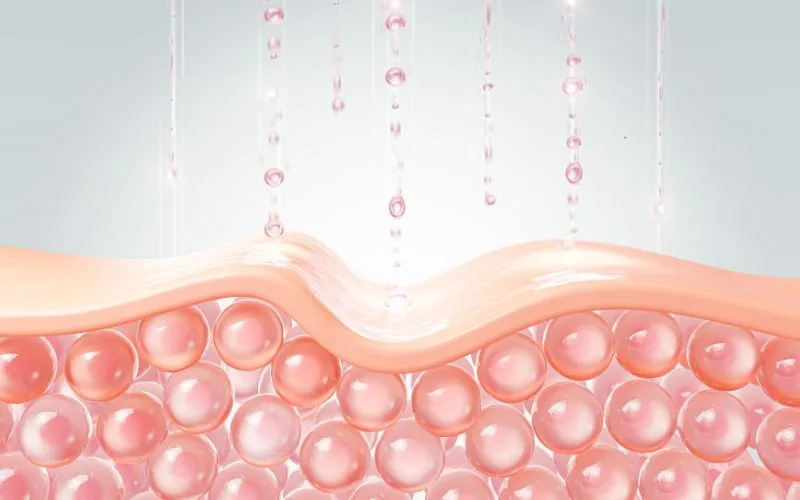The idea of injecting salmon DNA into your face sounds like something from a science fiction novel, yet Rejuran has quietly become one of the most sought-after treatments in aesthetic medicine. Most patients know it as “that healing injection from Korea,” but few understand what polynucleotides actually do once they’re beneath your skin. The reality is both more fascinating and more complex than the simple “DNA repair” explanation you typically hear.
The Species Barrier Illusion
Here’s something that might disturb you: salmon DNA and human DNA are remarkably similar in structure, which is exactly why Rejuran works. The polynucleotides derived from salmon sperm share enough genetic similarity with human DNA that your cells can actually use them as building blocks for repair processes. We’re talking about a 60–70% genetic compatibility between species separated by millions of years of evolution.
This compatibility isn’t accidental—it’s why salmon DNA was specifically chosen over other sources. Your cells can’t tell the difference between properly processed salmon polynucleotides and your own DNA fragments, which means they readily incorporate this foreign genetic material into their repair mechanisms. You’re essentially receiving a genetic transplant from a fish.

The Molecular Weight Mystery
Not all Rejuran is created equal, and the molecular weight of the polynucleotides makes a crucial difference that most patients never hear about. Lower molecular weight fragments penetrate deeper into the dermis but are broken down more quickly. Higher molecular weight polynucleotides stay closer to the surface but have longer-lasting effects.
Different Rejuran formulations use different molecular weight distributions. The molecular weight determines not just how deeply the treatment penetrates, but also how long it takes to see results and how long those results last. This is why some patients notice quick skin texture improvements while others wait weeks for visible changes.
The Inflammatory Activation Secret
Rejuran doesn’t just provide raw materials for skin repair—it actively triggers controlled inflammation to jumpstart your healing processes. The polynucleotides act as damage-associated molecular patterns (DAMPs), essentially tricking your immune system into thinking there’s been tissue injury that needs repair.
This inflammatory response is why some patients experience redness, swelling, and small bumps after treatment. It’s not a side effect—it’s the intended mechanism of action. Your skin is supposed to think it’s been injured so it will mobilize repair resources. The challenge is calibrating this inflammatory response to be therapeutic rather than excessive.

The Collagen Synthesis Paradox
While everyone talks about Rejuran stimulating collagen production, the mechanism is more complex than simple stimulation. The polynucleotides actually alter the ratio of different collagen types produced by your fibroblasts. Younger skin produces more type III collagen, which is more flexible and repair-oriented, while older skin produces more type I collagen, which is stronger but less adaptable.
Rejuran seems to shift this balance back toward a more youthful collagen profile, not just by increasing total collagen production, but by changing the quality and type of collagen being synthesized. This is why treated skin often feels different—softer and more pliable—not just tighter.
The Fragmentation Factor
The salmon DNA in Rejuran isn’t used in its original form—it’s fragmented into specific sizes that optimize biological activity. This fragmentation process is critical because intact DNA would be too large to penetrate cells effectively and might trigger stronger immune responses. The optimal fragment size is determined by balancing penetration, stability, and biological activity.
Different manufacturers use different fragmentation protocols, which is why various “salmon DNA” products can produce different results even though they’re theoretically the same treatment. The size distribution of these fragments affects everything from injection comfort to result longevity.
The Nucleotide Recycling System
Your skin cells don’t just use the salmon DNA as a template—they actually break it down and recycle the individual nucleotides (the building blocks of DNA) for their own repair processes. This recycling system is incredibly efficient, but it’s also why Rejuran effects are gradual and cumulative rather than immediate.
Each treatment provides a fresh supply of nucleotides that your cells can use over the following weeks and months. This is why multiple treatments are typically recommended—you’re essentially restocking your skin’s genetic repair supplies with each session.
The Hydration Deception
While Rejuran is often marketed for its hydrating properties, the hydration improvement isn’t directly from the polynucleotides themselves. Instead, the DNA fragments stimulate your skin to produce more hyaluronic acid and improve its water-binding capacity. You’re not getting hydration from the treatment—you’re getting enhanced ability to create and retain your own hydration.
This self-generated hydration is why Rejuran’s moisturizing effects can last for months after treatment, unlike topical hydrating products that provide temporary relief. Your skin is literally learning to hydrate itself more effectively.

The Immune Memory Formation
Repeated Rejuran treatments can create a form of immune memory in your skin, where your cells become more efficient at recognizing and responding to the polynucleotides. This is why many patients notice that subsequent treatments work faster and more effectively than their initial sessions.
However, this immune memory can also work in reverse. Some patients develop sensitivity to the treatment over time, experiencing increased inflammation or reduced effectiveness. The balance between beneficial immune memory and problematic sensitization is delicate and unpredictable.
The Combination Synergy
Rejuran’s effects can be enhanced when combined with specific other treatments, but the timing and sequencing matter. Combining it with certain laser treatments or skinbooster can increase polynucleotide penetration and synergistic growth factor effects.
The Individual Genetic Response
Your genetic makeup influences how effectively your cells can utilize the salmon DNA, but this genetic variability is rarely discussed during consultations. Some people have genetic variants that make them super-responders to nucleotide therapy, while others have genetic limitations that reduce effectiveness.
Factors like your natural DNA repair capacity, inflammatory response patterns, and collagen synthesis genes all influence how well you’ll respond to Rejuran. This genetic lottery explains why some patients see dramatic improvements while others notice minimal changes despite identical treatments.